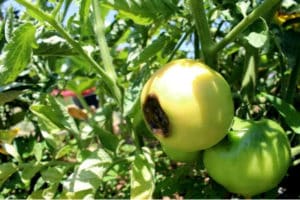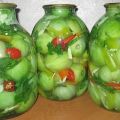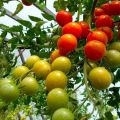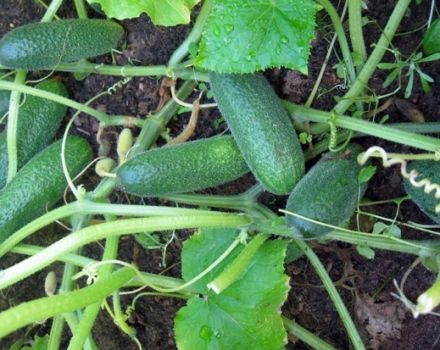After what crops can and will be better to plant tomatoes
It is no secret that one of the guarantees of a good harvest is to change the place for planting a crop. So then plant tomatoes - this is the question every worker asks at the end of the agricultural season. Garlic, carrots, beets, onions, radishes, turnips, strawberries, strawberries, potatoes, legumes, cabbage, or maybe cucumbers? What is the most favorable land for planting tomatoes next year? If the climate allows for two harvests a year, what is the best way to plan the rotation of crops in the garden? Let's take a look at each crop sequentially and decide where to plant tomatoes next season.
Tomatoes after legumes
Peas, beans, or beans often take up little space on your garden plot. Indeed, why wonder what to plant for the next season, if the same peas are sold in dried form in any store and are inexpensive. Here lies the main mistake of a novice gardener. Legumes enrich the soil with nitrogen and important trace elements that are good for tomatoes.
After them, the earth rests, but the beneficial properties of legumes do not end there. The tops are finely chopped and buried in the ground as fertilizer. After that, you can safely plant tomatoes: legumes are an excellent organic fertilizer. As a result, we get not only delicious fruits that can be dried for the winter, consumed fresh or used as ingredients for preparing various dishes, but also get ready-to-use fertile soil, which tomatoes love so much.
One of the limitations is the common fusarium disease for the two crops. If legumes are affected by this fungus, then tomatoes will also be susceptible to disease. After tomatoes and legumes, it is worth planting crops that are immune to the disease.
If nothing is changed
What will happen if you do not change the landing site and leave everything as it is for the next season? This approach greatly simplifies the task of growing crops in greenhouses, because a building is much more difficult to move if it is intended to grow a certain type of flora. If you plant tomatoes in the same place, then the very principle of rotation is violated, and you need to worry about a good harvest in advance.
When crops rotate, the following occurs:
- exchange of trace elements;
- part of the harmful microflora dies;
- pests weakened by the winter period, not finding food, are doomed;
- the earth is saturated with substances necessary for the growth of plants of other crops.

Tip: it is recommended to plant different species and families of plants in the same place when the season changes.
But there is a way out in this situation:
- you can use organic and mineral fertilizers in increased quantities;
- periodically spray plants, fight microflora and pests;
- partially transfer the soil;
- automate watering;
- remove excess acidity of the fertile layer using a simple chemical reaction: for one square meter, it is enough to add about 50 - 80 grams of ordinary lime - the environment will become neutral or close to alkaline, which will create favorable conditions for growing seedlings.
Here you do not need to think about after which plants to grow other crops. This approach is more laborious, but it pays off on an industrial scale.
Tomatoes and potatoes
Plants are similar in their natural composition and are equally fond of nitrogen fertilizers. The soil after the potatoes is depleted in nitrogen and, if tomatoes can be planted, for normal growth it will be necessary to form an intensive fertilization schedule. Since it is almost impossible to evenly fertilize each section of the soil in one season, overdoses are possible, which will negatively affect the quality of the fruits.
As for various parasites or bacteria, most of them are equally fond of both tomatoes and potatoes. At the end of the season, many fruits after the potatoes simply remain in the ground. The human factor affects: it is almost impossible to sift the soil for small fruits or their parts. When harvesting in small farms, ordinary shovels are usually used, and in large farms, automatic devices for removing large volumes of crops are used.

In the remaining fruits and soil, parasites or bacteria live calmly, which will enthusiastically welcome the change of the menu in the coming season. In this case, you cannot expect to get good tomatoes after potatoes.
It will take precious time for each farmer to fight the negative consequences of the decision. It is best to anticipate all the risks in advance when changing the place of planting tomatoes and choose the best place.
What parasites can prevent farmers:
- Colorado beetle. Not so long ago, the overseas guest expanded his sphere of influence and lives in areas where he has not previously met. He still loves potato leaves, but he also enjoys taking a bite of tomato tops.
- Medvedka. Prefers moist soil and feels good both on potatoes and tomatoes. It breaks through small burrows in the ground and feeds on the plant stem.
- Wireworm. Gnaws the stems of crops and ready-made fruits. Visually, the result of the labor of this common enemy of all farmers is observed in the form of blackened minks along the diameter of the pest's body.
As for fungal diseases, the common enemy is late blight. Affects plant stems and foliage. Gradually passes on to the fruits and leads to their significant loss. If you see dark black spots on the tops and fruits, then, most likely, the diagnosis is obvious.
Tomatoes after strawberries
Sometimes a situation arises when a farmer refuses juicy strawberries in favor of tomatoes. This can happen, for example, as a result of aging of the beds or for other reasons. But what awaits us if it's time to plant tomatoes after strawberries - how will events develop in this case? Can tomatoes be planted like that? After all, you can probably find another place for annual plants and not reduce the plantation, in which a lot of work has already been invested.
If you nevertheless decided to give up part of the land and give it up for tomatoes, then, most likely, unprecedented harvests can not be expected. The soil after the strawberries should rest, and this will take time. The main reason for this injustice is the lack of nitrogen in the soil. This element is vital for the normal growth of strawberry and tomato crops.
The way out of this situation is quite laborious. The soil must be prepared in advance:
- Dig up thoroughly.
- Remove weeds. Often, after strawberries, real wheatgrass plantations remain, the roots of which are intertwined with the main crop. It is quite difficult to remove this grass; partial removal of the soil along with the roots helps well.
- After that, the land must be dried and re-dug up together with manure or other organic fertilizer. Peat feeding in small quantities is perfect. Ash contributes to the normal growth of tops and fruits.
- After the soil after the strawberries has stood a little, you can add mineral fertilizers with nitrogen, potassium, or combined. Next, you can form beds for future planting.
- Throughout its life, the plant needs several times per season. feed tomatoesby combining liquid fertilizers with dry, mineral and organic fertilizers. Then, after the tomatoes, you can use the soil again.
Strawberries are in the pink family and in the genus of the strawberries we all know. It is subject to all agronomic rules based on the principles of crop rotation. If strawberries are planted on your land, get ready for thorough soil preparation when transplanting tomatoes onto it.
Tomatoes after onions
Few of the pests are able to feast on the juicy fruit of such an interesting plant as onions. This explains the fact that in the absence of care for it, the onion runs wild and feels good among weeds and pests, frightening off the latter with their exotic taste and phytoncides. Planting tomatoes after onions is a balanced decision of an experienced gardener. But what happens to the soil after the green onions live in it?
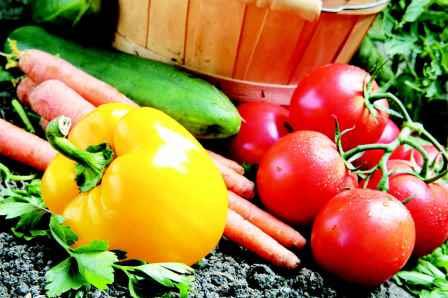
Chives are a perennial plant, but are usually planted for one year. After that, they harvest and prepare the land for the next planting.
The ground after the bow becomes:
- slightly alkaline, which is favorably perceived by plants of the Solanaceae family;
- nitrogen and potassium remain in the soil - they accumulate from fertilizers, and onions are indifferent to them.
We must not forget about such specialized substances as:
- phytoncides - special substances that are secreted by the root system of a plant, its leaves and stems: when they enter the soil, they create a favorable environment for growth, destroying bacteria and scaring away pests;
- the root system of the plant frees the soil from pests that simply have nothing to eat.
All these factors make it possible to plant tomatoes in open ground and, in fact, to carry out a competent rotation of the fruiting flora.
How to properly plan a crop rotation for tomatoes
The basic principle of crop rotation is seasonal or intraseasonal rotation of various species and families of plants within a land plot. They cannot be planted in the same place many times, as this depletes the soil.

This problem can be partially solved:
- the introduction of various fertilizers into the soil;
- replacing the seed bank - for example, this method works well in the case of potatoes.
But only a competently conducted seasonal crop rotation can completely remove all questions and ensure good yield indicators.
- It is necessary to break down all the crops that grow on the land into species and families.
- Draw up a detailed plan of the garden.
- Following the rules of agricultural technology, carry out a seasonal crop rotation.
After that, you can decide after which crops the tomatoes can be planted. Good predecessors of tomatoes that will help you grow a good harvest:
- cauliflower or white cabbage;
- beets and carrots;
- family of legumes;
- pumpkin;
- garlic and onions;
- roots.
If we grow certain types of flowers on the site, then from such an innovation we can expect more than just a positive effect. After petunia or cineraria, there is no need to plant tomatoes: surprisingly, all these plants belong to the nightshade family, but nasturtium or tansy, coriander or flax can make tomatoes a pleasant company.
As you can see, gardening requires a careful analysis of all the factors that can affect the yield. An attentive attitude to nature often leads to amazing discoveries, teaches you to be sensitive and responsive, develops emotionally and helps to comprehend the meaning of life itself, which has evolved according to its own laws over billions of years.
